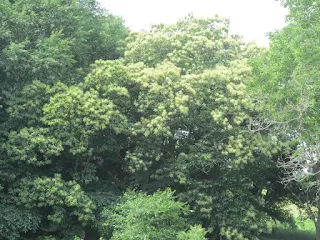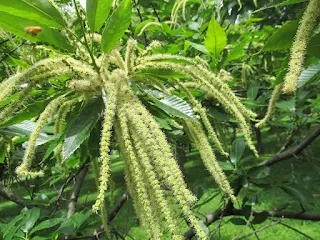 |
| I spotted these chestnut trees while scouting out my walking route. 900 GDD (base 50) is a fine time to find chestnut trees because they are in flower. |
 |
| Same picture with zoom. They are very distinctive once you know what you are looking for. |
 |
| Each individual "feather" is up to 8" long. |
 |
| Honeybees find these flowers attractive due to their abundant pollen. |
 |
| Respectable sized trees. You can see the owner's tree stand just below the knot on the closest trunk. |
 |
| Deer prefer chestnuts to acorns and apples. |
 |
| Elderberry bush in blossom. Image from HERE |


No comments:
Post a Comment
Readers who are willing to comment make this a better blog. Civil dialog is a valuable thing.